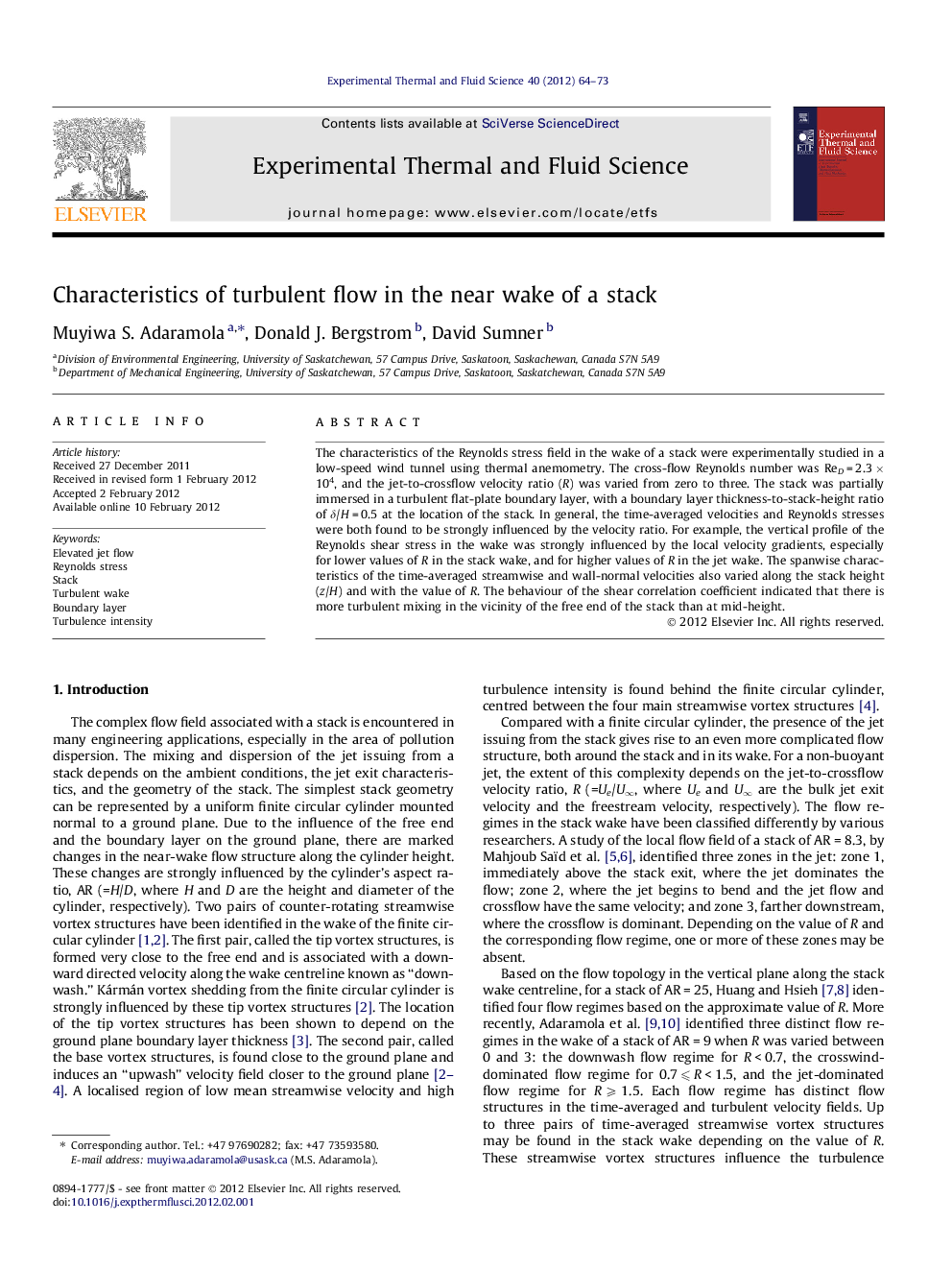| کد مقاله | کد نشریه | سال انتشار | مقاله انگلیسی | نسخه تمام متن |
|---|---|---|---|---|
| 652182 | 1457436 | 2012 | 10 صفحه PDF | دانلود رایگان |

The characteristics of the Reynolds stress field in the wake of a stack were experimentally studied in a low-speed wind tunnel using thermal anemometry. The cross-flow Reynolds number was ReD = 2.3 × 104, and the jet-to-crossflow velocity ratio (R) was varied from zero to three. The stack was partially immersed in a turbulent flat-plate boundary layer, with a boundary layer thickness-to-stack-height ratio of δ/H = 0.5 at the location of the stack. In general, the time-averaged velocities and Reynolds stresses were both found to be strongly influenced by the velocity ratio. For example, the vertical profile of the Reynolds shear stress in the wake was strongly influenced by the local velocity gradients, especially for lower values of R in the stack wake, and for higher values of R in the jet wake. The spanwise characteristics of the time-averaged streamwise and wall-normal velocities also varied along the stack height (z/H) and with the value of R. The behaviour of the shear correlation coefficient indicated that there is more turbulent mixing in the vicinity of the free end of the stack than at mid-height.
► The Reynolds stress field in the wake of a stack is investigated experimentally.
► The mean velocities and Reynolds stresses were strongly affected by the jet velocity.
► The complexity of the flow structures of the wake of a stack is shown in this study.
► The wake complexity could have significant implications for contamination dispersion.
Journal: Experimental Thermal and Fluid Science - Volume 40, July 2012, Pages 64–73